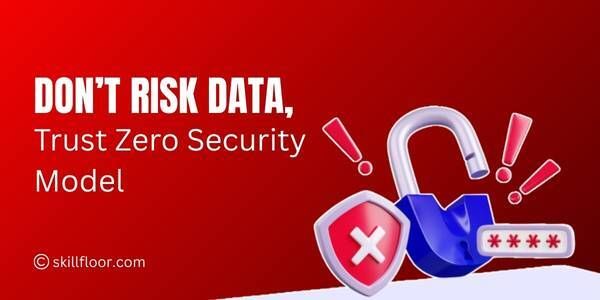Social Media Marketing for E-Commerce: Strategies for Online Retail Success
Learn effective Social Media Marketing strategies for E-Commerce to achieve online retail success. Discover key tactics and tips for boosting your online store's presence

In today's digital era, the fusion of social media and e-commerce has opened up a world of opportunities for online retailers. With the right strategies, social media can become a powerhouse for driving online retail success.We'll explore how understanding your audience, choosing the right platforms, crafting engaging content, utilizing social media advertising, fostering engagement, collaborating with influencers, and tracking performance can all come together to boost your e-commerce business. So, let's embark on this journey to uncover the strategies that can propel your online retail venture to new heights in the digital marketplace.
The growing importance of social media in e-commerce
Certainly, here are some bullet points highlighting the growing importance of social media in e-commerce:
-
Social media platforms provide e-commerce businesses with additional online channels to connect with their audience.
-
Social media enables direct and immediate interaction with customers, fostering trust and brand loyalty.
-
Users often discover new products and brands through social media recommendations and sponsored content.
-
Customers frequently share reviews, photos, and testimonials, which can serve as powerful social proof.
-
Social media platforms offer highly targeted advertising options, reaching specific demographics and interests.
-
Active social media presence can position a brand as an industry authority and build credibility.
-
Some platforms, like Instagram and Facebook, allow for direct shopping, streamlining the purchase process.
-
Social media analytics provide valuable customer data to refine marketing strategies and product offerings.
-
E-commerce businesses can reach a global audience through social media, expanding their market.
-
Businesses that effectively leverage social media often gain a competitive edge in the crowded e-commerce space.
The impact of effective social media marketing on online retail success
Effective social media marketing has a profound impact on online retail success. It serves as a dynamic bridge connecting businesses to their target audiences. Through strategic content, engagement, and advertising, social media can drive brand visibility, customer engagement, and ultimately, sales. It fosters a sense of community, encourages user-generated content, and enables personalized interactions. Furthermore, social media platforms offer valuable analytics for refining marketing strategies, ensuring that e-commerce businesses can adapt and thrive in an ever-evolving digital landscape. In sum, harnessing the power of social media marketing is pivotal for online retailers looking to stand out and succeed in today's competitive market.
Understanding Your Target Audience
The Importance of Audience Segmentation
To excel in social media marketing for e-commerce, understanding the diverse needs and preferences of your audience is paramount. Audience segmentation allows you to categorize your customers based on demographics, interests, and behavior. By tailoring your content and messaging to specific segments, you can enhance engagement and conversion rates. For instance, a clothing retailer might target different segments for men's and women's apparel.
Tools and Methods for Audience Research on Social Media
Numerous tools and methods are available to delve into your audience's online behavior. Social media analytics platforms like Facebook Insights, Twitter Analytics, and third-party tools like Hootsuite provide valuable insights into your followers' demographics, engagement patterns, and content preferences. Additionally, conducting surveys and analyzing competitor audiences can offer deeper insights.
Creating Buyer Personas for E-commerce
Buyer personas are fictional representations of your ideal customers. Crafting these personas involves compiling information about your audience segments into detailed profiles. Include demographics, interests, pain points, and preferred social media platforms. This helps you visualize and empathize with your customers, allowing you to tailor content and strategies effectively. For instance, a tech gadget store might create personas for "Tech Enthusiast Tim" and "Budget-Conscious Sarah" to guide their marketing efforts.
Choosing the Right Social Media Platforms
-
Understanding the Landscape: When venturing into social media marketing for e-commerce, it's crucial to have an overview of the popular platforms available. Platforms like Facebook, Instagram, Twitter, LinkedIn, Pinterest, and TikTok all offer unique features and user demographics that can be leveraged for your e-commerce strategy.
-
Target Audience Alignment: Selecting the most suitable social media platforms for your e-commerce business hinges on understanding your target audience. Consider factors like age, interests, and online behavior. For instance, if your audience is primarily young and visually-oriented, platforms like Instagram or TikTok might be more effective.
-
Niche Platforms' Importance: In specialized e-commerce markets, niche platforms play a significant role. These platforms cater to specific interests or industries, providing a more focused audience. For instance, if you sell handmade artisanal products, platforms like Etsy or Houzz could be valuable additions to your social media strategy.
Choosing the right social media platforms is pivotal in ensuring your e-commerce efforts effectively reach and engage your desired audience.
Creating Engaging Content
Types of Content that Resonate with E-commerce Audiences
In the world of e-commerce, content diversity is key. From eye-catching visuals showcasing your products in various settings to informative blog posts and engaging videos, your content mix should cater to different customer preferences. Highlight product features, demonstrate their use, and share customer testimonials to provide a well-rounded view of your offerings.
Tips for Crafting Compelling Product Descriptions and Visuals
Crafting enticing product descriptions is an art. Use descriptive language that evokes emotion and outlines the benefits of your products. Complement this with high-quality visuals, including images and videos, that give customers a clear understanding of what they're purchasing. Ensure that product descriptions are concise, yet comprehensive, to keep potential buyers engaged.
User-Generated Content and Its Impact on E-commerce Sales
User-generated content (UGC) is a goldmine for e-commerce businesses. Encourage customers to share their experiences with your products through reviews, photos, and videos. UGC not only builds trust but also provides authentic insights. Implement UGC in your marketing strategy, showcasing it on your website and social media to boost sales and foster a sense of community around your brand.
Leveraging Social Media Advertising
Social media advertising is a potent tool for e-commerce success. It offers the advantage of targeting specific audience segments and reaching potential customers with precision. To make the most of it, start by defining your advertising goals, whether it's driving website traffic, increasing sales, or building brand awareness.
Select the right ad format for your objectives, such as image or video ads, carousel ads, or sponsored posts. Craft compelling ad copy and visuals that resonate with your target audience and align with your brand's identity.
Utilize the targeting options provided by social media platforms, including demographics, interests, behaviors, and custom audiences. Regularly monitor the performance of your ad campaigns, analyzing key metrics like click-through rates (CTR), conversion rates, and return on ad spend (ROAS).
Remember that effective social media advertising is an ongoing process of testing and optimization. By refining your targeting, creative elements, and budget allocation based on real-time data, you can maximize the impact of your e-commerce advertising efforts.
Building a Community and Fostering Engagement
Building a vibrant online community around your e-commerce brand is essential for long-term success. Start by consistently engaging with your audience. Respond promptly to comments and messages, showing that you value their input. Encourage user-generated content by running contests or featuring customer reviews and testimonials. Foster discussions and create a sense of belonging among your followers. Engaging content like polls, quizzes, and behind-the-scenes glimpses can further strengthen your community and keep them invested in your brand. Remember, a loyal community can become your most effective brand advocates.
Influencer Collaboration
In the world of e-commerce, influencer collaboration can be a game-changer. Here's how to make it work for your brand:
Identifying and Partnering with Influencers: Start by identifying influencers in your niche whose values align with your brand. Look for those with an engaged and relevant following. Build authentic relationships by reaching out personally and offering mutually beneficial partnerships.
Best Practices for Influencer Marketing Campaigns: Plan your campaigns thoughtfully. Clearly define campaign objectives, deliverables, and compensation. Ensure influencers' content reflects your brand's messaging. Encourage creativity while providing guidelines. Monitor and support influencers throughout the campaign.
Measuring the Impact of Influencer Collaborations: Utilize tracking links and unique discount codes to measure direct sales impact. Analyze engagement metrics like likes, comments, and shares. Evaluate overall campaign ROI by comparing sales generated to the cost of collaboration. Use these insights to refine future influencer strategies.
Tracking and Analyzing Performance
Monitoring and analyzing the performance of your social media marketing efforts is crucial for e-commerce success. Here's how to do it effectively:
To begin, identify key performance indicators (KPIs) that align with your e-commerce goals. These may include website traffic, conversion rates, click-through rates, and revenue generated from social media.
Utilize social media analytics tools, such as Facebook Insights or Twitter Analytics, to track your chosen KPIs. These tools provide valuable data on user demographics, engagement, and content performance.
Regularly review your analytics to identify trends and patterns. Pay attention to which types of content resonate most with your audience and which platforms drive the most traffic and conversions.
Use A/B testing to experiment with different content formats, posting schedules, and ad creatives. This allows you to refine your strategy based on what works best for your audience.
Finally, adjust your social media marketing strategy based on the insights gained from tracking and analyzing performance. Continuously refine your approach to optimize results and drive e-commerce success.
Effective social media marketing is pivotal to the success of e-commerce ventures. By understanding your audience, choosing the right platforms, creating engaging content, leveraging advertising, building a community, and collaborating with influencers, you can drive growth and sales for your online retail business. Additionally, continuous tracking, analysis, and adaptation based on data-driven insights will keep your e-commerce strategies effective in the ever-evolving landscape of social media. Embrace these strategies to thrive in the competitive world of online retail.




























































